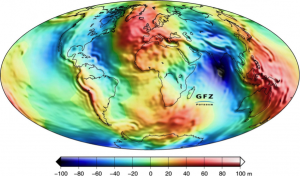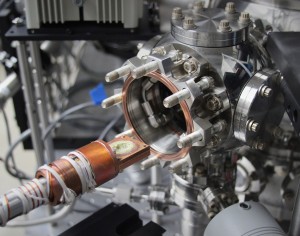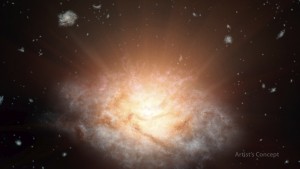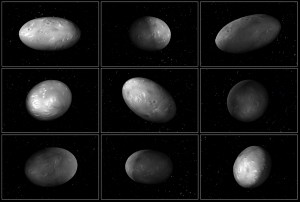Poster’s Note: One of the many under-appreciated aspects of NASA is the extent to which it publishes quality science content for children and Ph.D.’s alike. NASA Space Place has been providing general audience articles for quite some time that are freely available for download and republishing. Your tax dollars help promote science! The following article was provided for reprinting in April, 2014.
By Dr. Ethan Siegel
Put more mass beneath your feet and feel the downward acceleration due to gravity increase. Newton’s law of universal gravitation may have been superseded by Einstein’s, but it still describes the gravitational force and acceleration here on Earth to remarkable precision. The acceleration you experience is directly proportional to the amount of mass you “see,” but inversely proportional to the distance from you to that mass squared.
The denser the mass beneath your feet, the stronger the gravitational force, and when you are closer to such a mass, the force is even greater. At higher elevations or even higher altitudes, you’d expect your gravitational force to drop as you move farther from Earth’s center. You’d probably also expect that downward acceleration to be greater if you stood atop a large mountain than if you flew tens of thousands of feet above a flat ocean, with nothing but ultra-light air and liquid water beneath you for all those miles. In fact this is true, but not just due to the mountain’s extra mass!
Earth is built like a layer-cake, with the less dense atmosphere, ocean, and crust floating atop the denser mantle, which in turn floats atop the outer and inner cores of our planet. An iceberg’s buoyancy is enough to lift only about one tenth of it above the sea, with the other nine tenths below the surface. Similarly, each and every mountain range has a corresponding “invisible mountain” that dips deep into the mantle. Beneath the ocean floor, Earth’s crust might be only three to six miles thick, but it can exceed 40 miles in thickness around major mountain ranges like the Himalayas and the Andes. It’s where one of Earth’s tectonic plates subducts beneath another that we see the largest gravitational anomalies: another confirmation of the theory of continental drift.
A combination of instruments aboard NASA’s Gravity Recovery and Climate Experiment (GRACE) satellites, including the SuperSTAR accelerometer, the K-band ranging system and the onboard GPS receiver, have enabled the construction of the most accurate map of Earth’s gravitational field ever: to accelerations of nanometers per second squared. While the mountaintops may be farther from Earth’s center than any other point, the extra mass of the mountains and their roots – minus the mass of the displaced mantle – accounts for the true gravitational accelerations we actually see. It’s only by the grace of these satellites that we can measure this to such accuracy and confirm what was first conjectured in the 1800s: that the full layer-cake structure of Earth must be accounted for to explain the gravity we experience on our world!
This article was provided by the Jet Propulsion Laboratory, California Institute of Technology, under a contract with the National Aeronautics and Space Administration.
Image credit: NASA / GRACE mission / Christoph Reigber, et al. (2005): An Earth gravity field model complete to degree and order 150 from GRACE: EIGEN-GRACE02S, Journal of Geodynamics 39(1),1–10. Reds indicate greater gravitational anomalies; blues are smaller ones.
About NASA Space Place
The goal of the NASA Space Place is “to inform, inspire, and involve children in the excitement of science, technology, and space exploration.” More information is available at their website: http://spaceplace.nasa.gov/













